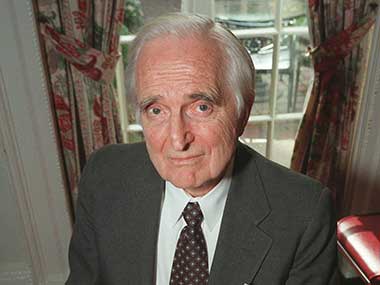Douglas Engelbart might not be a familiar name to those who aren’t well-versed with the history of computers. Engelbart, who passed away yesterday at the age of 88, is the man responsible for inventing the computer mouse, a device without which many of us can’t imagine using our PC’s and Desktops even though we have moved into the age of touch-screens. But apart from the mouse, Engelbart also contributed independently to the early versions of the Internet.
He was a man whose ideas and inventions were ahead of their time.
Here are few things you need to know about Engelbart:
How it all began: In 1950 Engelbart had a vision where he saw a world where people could interact with computers which would have television-like screens, and use them to share information and solve problems. According to this New York Times piece , when Engelbart had this vision, computers were the size of a huge room, and were not about personal use.
The NYT story also talks about how Engelbart was inspired by an article by Vannevar Bush, titled “As We May Think”. Bush was a physicist and inventor and in the article he described a universal information retrieval system called Memex in which individuals would compress and store all of their books, records, and communications, “mechanized so that it may be consulted with exceeding speed and flexibility.” Dr Engelbart was inspired by this idea.
Invention of the Mouse: Douglas Engelbart invented the mouse in 1963 when he was working at the Stanford Research Institute (now SRI International) along with his lead engineer Bill English.
The first mouse didn’t look anything like the ones we have today; it was a was a wooden shell with two metal wheels, perpendicular to each other: the rotation of each wheel translated into motion along one axis. According to this piece while the earlier versions only had three buttons, Engelbart wanted 10 buttons.
Sadly Engelbart did not hold the patent for the mouse, which was held by SRI and the patent ran out in 1987, before the mouse became popular.
Mother of all Demos In December 1968, Engelbart gave what is referred to in the computer world as the ‘mother of all demos’ at the Fall Joint Computer Conference in San Francisco. Not only did he display the use of a mouse to the audience but he also showed off networked and interactive computing systems, video conferencing, ideas of improved hypertexting which would be the founding stone for the web.
In short Engelbart was way ahead of his time.
Contribution to the Internet: Engelbart also invented the NLS system or the “oN-Line System.” This was revolutionary because it used used hypertext links, the mouse, raster-scan video monitors, screen windowing, and other modern computing concepts. However the system was deemed as too difficult to learn. NLS was gradually faded out and replaced by the ARPAnet computer network which is the foundation stone for the modern Internet.
Lack of success: You’d think being ahead of the times would have ensured a lot of financial success for Engelbart. But that didn’t happen. According to this ZDNET article, Silicon valley remained impervious to the man’s genius and Engelbart himself felt that he was a failure. “I sometimes feel that my work over the past 20 or so years has been a failure. I have not been able to get funding and I have not been able to engage anybody in a dialogue.”


)




)
)
)
)
)
)
)
)